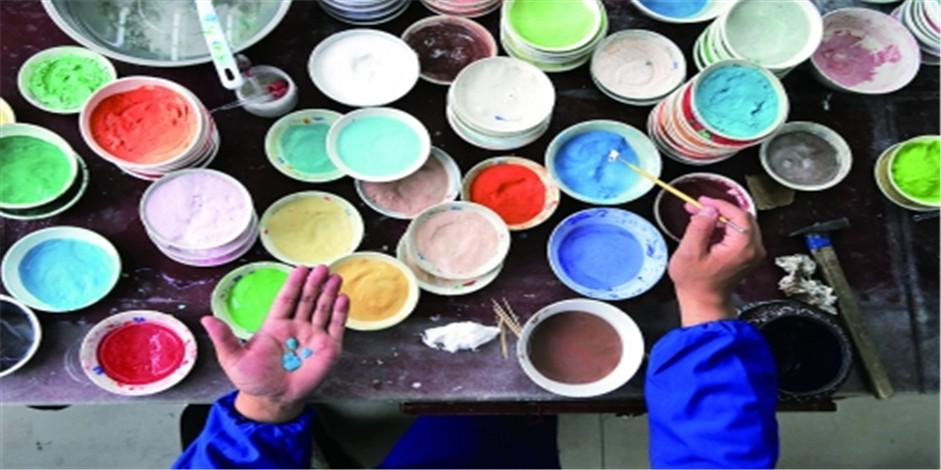USES AND FORMULATIONS
The largest use of antimony oxide is in a synergistic flame retardant system for plastics and textiles. Normal applications include upholstered chairs, rugs, television cabinets, business machine housings, electrical cable insulation, laminates, coatings, adhesives, circuit boards, electrical appliances, seat covers, car interiors, tape, aircraft interiors, fiberglass products, carpeting, etc. There are numerous other applications for antimony oxide that are discussed herein.
Polymer formulations are generally developed by the user. Dispersion of the antimony oxide is extremely important to get the maximum effectiveness. The optimum amount of either chlorine or bromine must also be used.
FLAME RETARDANT APPLICATIONS IN HALOGENATED POLYMERS
No halogen addition is necessary in polyvinyl chloride (PVC), polyvinylidene chloride, chlorinated polyethylene (PE), chlorinated polyesters, neoprenes, chlorinated elastomers (i.e., chlorosulfonated polyethylene ).
Polyvinyl Chloride (PVC). – Rigid PVC. products (unplasticized) are essentially flame retarded due to their chlorine content. Plasticized PVC products contain flammable plasticizers and must be flame retarded. They contain a high enough chlorine content so that an additional halogen is usually not necessary, and in these cases 1 % to 10% antimony oxide by weight is used. If plasticizers are used that reduce the halogen content, the halogen content can be increased by using halogenated phosphate esters or chlorinated waxes.
Polyethylene (PE). – Low-density polyethylene (LDPE). burns rapidly and must be flame retarded with as much as 8% to 16% antimony oxide and 10% to 30% of a halogenated paraffin wax or a halogenated aromatic or cycloaliphatic compound. Brominated aromatic bisimides are useful in PE used in electrical wire and cable applications.
Unsaturated Polyesters. – Halogenated polyester resins are flame retarded with approximately 5% antimony oxide.
FLAME RETARDANT APPLICATION FOR COATINGS AND PAINTS
Paints – Paints can be made flame retardant by providing a halogen, usually chlorinated paraffin or rubber, and 10% to 25% antimony trioxide. Additionally antimony oxide is used as a color “fastener” in paint subject to ultraviolet radiation that tends to deteriorate colors. As a color fastener it is used in yellow striping on highways and in yellow paints for school buses.
Paper – Antimony oxide and a suitable halogen are used to render paper flame retardant. Since antimony oxide is insoluble in water, it has an added advantage over other flame retardants.
Textiles – Modacrylic fibers and halogenated polyesters are rendered flame retardant by using the antimony oxide- halogen synergistic system. Drapes, carpeting, padding, canvas and other textile goods are flame retarded using chlorinated paraffins and (or) polyvinyl chloride latex and approximately 7% antimony oxide. The halogenated compound and antimony oxide are applied by rolling, dipping, spraying, brushing, or padding operations.
CATALYTIC APPLICATIONS
Polyester Resins.. – Antimony oxide is used as a catalyst for the production of polyester resins for fibers and film.
Polyethylene Terephthalate (PET). Resins and Fibers.- Antimony oxide is used as a catalyst in the esterification of high-molecular-weight polyethylene terephthalate resins and fibers. High purity grades of Montana Brand Antimony Oxide are available for food applications.

CATALYTIC APPLICATIONS
Polyester Resins.. - Antimony oxide is used as a catalyst for the production of polyester resins for fibers and film.
Polyethylene Terephthalate (PET). Resins and Fibers.- Antimony oxide is used as a catalyst in the esterification of high-molecular-weight polyethylene terephthalate resins and fibers. High purity grades of Montana Brand Antimony Oxide are available for food applications.
OTHER APPLICATIONS
Ceramics - Micropure and high tint are used as opacifiers in vitreous enamel frits. They have the added advantage of acid resistance. Antimony oxide is also used as a brick colorant; it bleaches a red brick to a buff color.
Glass - Antimony oxide is a fining agent (degasser) for glass; especially for television bulbs, optical glass, and in fluorescent light bulb glass. It is used also as a decolorizer in amounts ranging from 0.1 % to 2%. A nitrate is also used in conjunction with antimony oxide to help oxidation. It is an antisolorarant (the glass will not change color in sunshine) and is used in heavy plate glass exposed to the sun. Glasses with antimony oxide have excellent light transmitting properties near the infrared end of the spectrum.
Pigment - Besides being used as a flame retardant in paints, it is also used as a pigment that prevents "chalk wash down" in oil base paints.
Chemical Intermediates - Antimony oxide is used as a chemical intermediate for the production of a wide variety of other antimony compounds, i.e. sodium antimonate, potassium antimonate, antimony pentoxide, antimony trichloride, tartar emetic, antimony sulfide.
Fluorescent Light Bulbs - Antimony oxide is used as a phosphorescent agent in fluorescent light bulbs.
Lubricants - Antimony oxide is added to fluid lubricants to increase stability. It is also added to molybdenum disulfide to decrease friction and wear.






